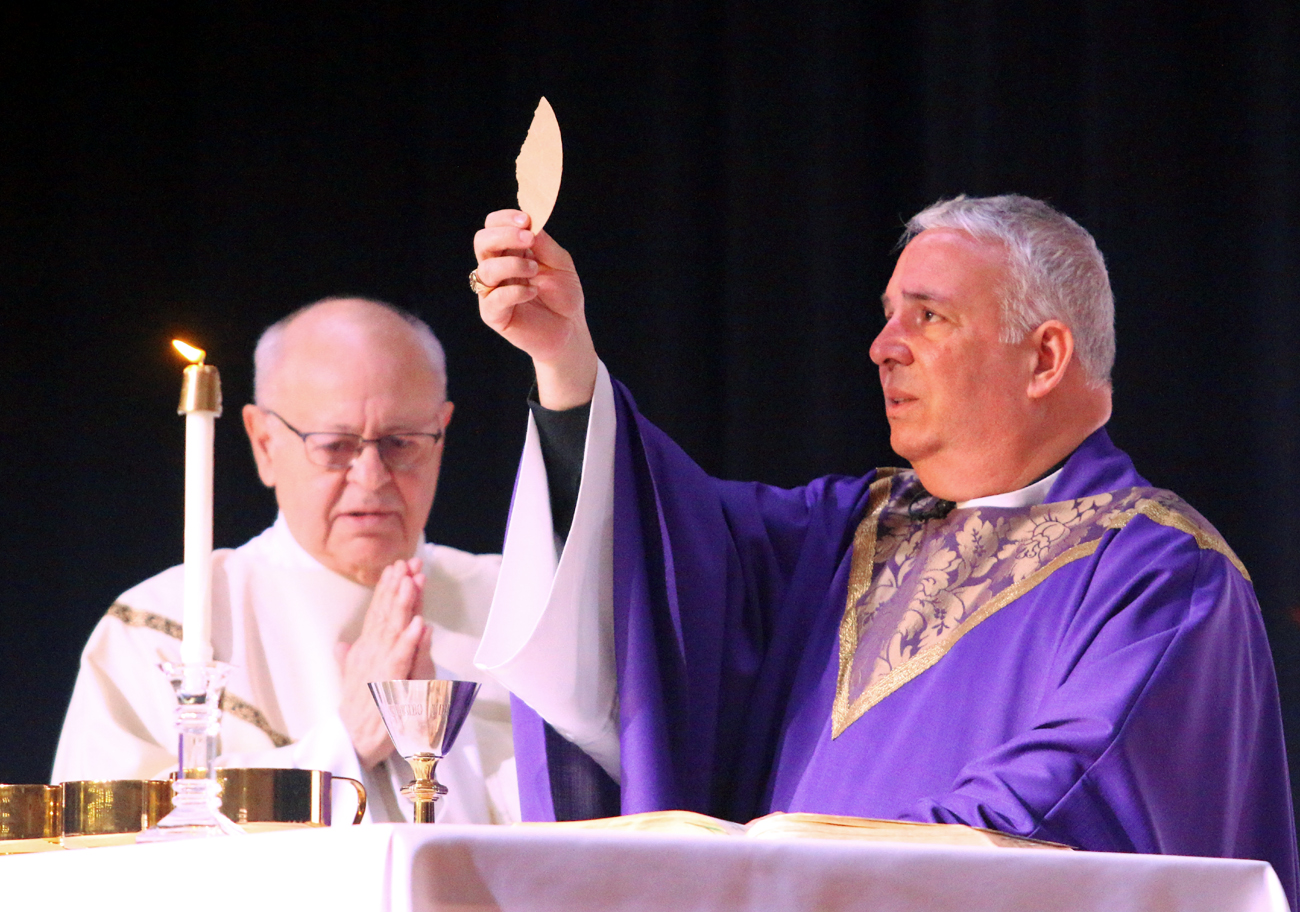
Deacon Louis Malfara assists at the altar as Archbishop Nelson Perez consecrates the Eucharist during a March 10 Mass at Little Flower Catholic High School for Girls in Philadelphia. On March 15, Archbishop Perez will celebrate an 11 a.m. liturgy at the Cathedral Basilica of SS. Peter and Paul for the intentions of all those affected by the coronavirus pandemic. (Photo by Sarah Webb)
Archbishop Nelson Perez will be the principal celebrant and homilist at a Mass to be offered for all those affected by the coronavirus (COVID-19) pandemic.
The liturgy will take place at 11 a.m. on Sunday, March 15 at the Cathedral Basilica of SS. Peter and Paul.
The faithful are encouraged to participate by livestream accessible at https://vimeo.com/event/17522, the Archdiocese of Philadelphia’s Facebook page (https://www.facebook.com/ArchPhila/) and website (https://archphila.org), and through Archbishop Perez’s Facebook page (https://www.facebook.com/ArchbishopPerez/).
Beginning March 15, the Sunday 11 a.m. Mass celebrated at the Cathedral Basilica of SS. Peter and Paul will be streamed live through the above links.
(Related: Nightly online rosary set to ‘push back’ against coronavirus)
These livestreams will be provided on an ongoing basis as an additional mode for individuals to participate in Sunday Mass remotely during the COVID-19 pandemic.
Catholics in the Archdiocese of Philadelphia not wishing to attend Sunday Mass for fear of spreading or contracting the coronavirus are no longer obligated to do so, until further notice.
The archdiocese made the announcement Thursday, March 12.
According to an archdiocesan statement, Archbishop Perez — in union with all the Catholic bishops of Pennsylvania — “has dispensed the faithful … from the obligation to attend Sunday Mass.”
But all regularly scheduled Masses in the 214 parishes of the archdiocese will remain open to the public for all those who to want to participate.
The highly infectious and deadly virus, which has sickened close to 150,000 people worldwide and killed more than 5,000, with more than 2,100 cases and at least 50 deaths in the United States since it was first detected in China.
Due to the disease’s transmission through person-to-person contact, public health officials worldwide have sought to limit large gatherings.
PREVIOUS: Nightly online rosary set to ‘push back’ against coronavirus
NEXT: Archdiocese closes schools, PREP to prevent coronavirus



Share this story